Paul Herdman on What Looking at the Rest of the World Teaches Us About Pathways
Key Points
-
Career connected learning initiatives can significantly improve both educational and employment outcomes for students.
-
Building pathways requires collaboration between educational institutions and employers to ensure seamless transitions for students.
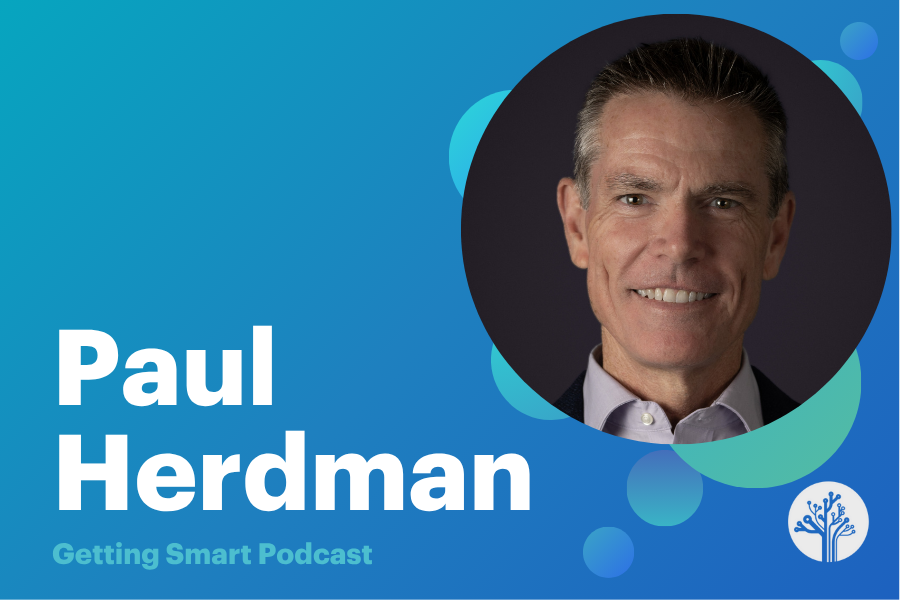
In this episode of the Getting Smart Podcast, Tom Vander Ark sits down with Paul Herdman, CEO of the Rodel Foundation of Delaware, to discuss the transformative power of pathways in education. They delve into how initiatives like work-based learning and seamless transitions from high school to career can enhance student success and readiness for the future. This conversation highlights the importance of collaboration between educational institutions and employers to build effective and equitable pathway opportunities and digs into a new report from Paul Herdman on what pathways look like around the globe. In this report, he identifies the following 10 lessons:
Design:
- Start earlier. Career readiness should begin earlier than high school, as young people need more time to explore their interests and develop durable skills. Efforts are being made to integrate career readiness from kindergarten through 12th grade, and to start exploration in middle school.
- Build around student agency. Students are more engaged and learn more effectively when they have ownership over what, when, where, and how they learn. Programs that allow students to build high school experiences around their unique career interests are proving successful.
- Design for “no wrong doors.” The system should allow students to move seamlessly between apprenticeships, higher education, and careers, ensuring that regardless of their current path, there is always a viable next step. This involves softening the traditional divide between general and vocational education and ensuring applied learning is recognized by postsecondary institutions.
- Maximize access. Challenges like limited transportation and dispersed employers hinder access to career pathways. Solutions include leveraging technology like virtual reality and establishing regional partnerships where districts collaborate to offer a wider range of pathways.
- Focus on equity. Intentional efforts are needed to ensure career pathways benefit all students, especially those with diverse needs, and do not exacerbate existing societal inequities. This includes addressing disparities in gender, income, and neurodiversity through data tracking, targeted supports, and augmented counseling.
Implementation:
- Put forward a compelling, common vision. Large-scale system changes require consensus among various stakeholders across education, workforce development, economic growth, and social equity. This involves research-based approaches and broad public input to create a shared roadmap and vision
- Invest in change management. Scaling career pathways demands fundamental shifts in how schools operate, and how employers and higher education partners adapt. Dedicated resources, time, and “intermediaries” are crucial to bridge gaps and facilitate these complex transitions from policy to practice.
- Co-design with employers. For career pathways to grow and be sustained, employers must see their involvement as more than good corporate citizenship, with a clear return on investment and genuine engagement in aligning credentials and training with current and future needs.
- Build the blur. This concept advocates for erasing the boundaries between high school, college, and careers to create a more integrated system. This can be achieved by expanding or strengthening existing programs that blend these experiences, rather than starting entirely new initiatives.
- Move from pilots to policy. To achieve scale and consistent quality, efforts need to transition from small, philanthropically funded pilots to sustained, publicly funded policies and infrastructure. This requires building appropriate governance models, data systems, and funding strategies.
Outline
- (00:00) Introduction to Career Connected Learning
- (02:13) The Origin of Pathways in Delaware
- (03:51) Global Insights and Project Development
- (07:11) Design Elements for Effective Pathways
- (13:36) Implementation Strategies and Equity Focus
- (25:15) Advice for School and System Leaders
- (30:47) Conclusion and Final Thoughts
Introduction to Career Connected Learning
Tom Vander Ark: Career connected learning improves education and employment outcomes. That’s the conclusion of a new report from Paul Herdman. The report continues a growing body of research suggesting that career readiness activities in high school are helpful to adults later in their lives. In particular, an OECD study of eight countries, over a decade of longitudinal data, showed that students who engage in a range of career readiness activities at the age of 15—from job fairs to paid internships—had better employment, education, and wage outcomes than comparable peers by the age of 25. This is the Getting Smart Podcast. I’m Tom Vander Ark, and today we’re talking about pathways with our friend Paul Herdman, the CEO of the Rodel Foundation of Delaware. Welcome, Paul.
Paul Herdman: Hey Tom. Great to talk to you.
Tom Vander Ark: We got on the phone and called you as soon as we got a copy of Global Lessons: Career Pathways in a Rapidly Changing World. It’s a great report, and I look forward to talking about it with you.
Paul Herdman: Thank you.
Tom Vander Ark: What’s a pathway and why did you write this study?
Paul Herdman: So career pathways are doing some things that were done in pieces, but not together for a long time. What it looks like today is a combination of a work-based learning experience, often an internship, something maybe even more than that, along with access to college credits and credentials just folded into the high school experience. So it’s sort of like your Drexel or Northeastern experience brought down to the high school level, and I could explain a bit more about how we got into this space, but it’s been an interesting journey and it feels like it’s something that’s happening all over the US and really happening all over the world.
Tom Vander Ark: Let’s come back to the report. When and how did pathways become a priority for you?
The Origin of Pathways in Delaware
Paul Herdman: So really the pathways work came as a result of a crisis, as most interesting things often do. So 2007-2009, the financial crisis hit everyone globally. Delaware, as many of you know, is a small state with a million people, but over 60% of the world’s Fortune 500 companies are based here, incorporated here, and have some sort of presence. So the financial crisis hit us pretty hard and there was a real concern that one or more of the major companies would leave. The governor at the time, Jack Markell, and some of the major companies were saying there was this huge disconnect between what high schools and colleges were producing and what we needed. So we looked at the youth unemployment data in the United States where it went from 12% to about 20% in that 2007 to 2009 time period, and then we looked around the world and in places like Switzerland, it pretty much stayed at 7%. So we went to take a visit. I brought a business leader with me and an educator, and we went to Switzerland along with several other folks. Long story short, we helped build a pilot here a little over a decade ago of 27 students, one high school, one advanced manufacturing partner, and a community college. Fast forward to today, there are 36,000 students in pathways in pretty much every high school in Delaware, about 80% of our high school kids. But this particular project started in 2023.
Global Insights and Project Development
Paul Herdman: The rationale for it came from a bit of an organic place, which was that we were doing a lot on pathways broadly, and Switzerland was a great model, but I realized that on the heels of COVID, there were some significant challenges that were new and difficult. I have three kids of my own in their twenties, and there were challenges across the country. I wanted to see if there were places outside of Switzerland that were more similar to the US in terms of economy and culture that we could learn from. So I talked to the OECD and built a project around that.
Tom Vander Ark: Well, I’m having a little bit of project jealousy because it was a very cool experience for you. You got the chance to spend some time with the OECD leadership and some of the countries in the OECD. Was it like a year, year and a half project?
Paul Herdman: So the full project has been probably close to two years. But the start of it was three months seconded in the OECD in France, from which I went to Australia, New Zealand, Scotland. And then I came back and visited some additional places in Canada and the US. So it wasn’t logistically the smartest move to go to Paris, then to Australia and New Zealand, etc. But it was pretty amazing to work with the OECD team. Amazing group. They work on everything from education to healthcare to the environment. It’s a huge organization working globally. So, fascinating to just be basically like an intern in this much larger, really interesting research hub.
Tom Vander Ark: I think your report had one big conclusion. There’s a chart that shows the pathway countries that have organized around career connected learning, and then there are some general education countries that have really focused on college-going for most students. I think the big conclusion is that those gen ed countries, which include Australia, New Zealand, Canada, and the US, have a big opportunity to shift to more, you call it, seamless connections to careers. Is that the big takeaway?
Paul Herdman: Yeah, that is a big takeaway. There’s one leader that really helped me organize this and actually co-chairs the National Center for Education and the Economy, Anthony McKay, or Tony McKay. He’s based in Melbourne. He’s somebody I knew before I started on this, and when I was actually thinking about it, I talked to him and he helped me identify people in Australia, New Zealand, etc., to talk to. The way he framed it was that there’s this melding of the head and the hands that in this general education side, the continuum needs to move all the way to the apprenticeship side, but there’s a move more to the middle. There are benefits to certainly how Switzerland’s done it, but the other side of it is that we don’t have to become Switzerland. And frankly, there are benefits to what we do that they’re not doing, which is worth learning from as well.
Tom Vander Ark: Your report is designed around 10 lessons. It’s organized and for the next 10 minutes, I’d love to dive into those 10 lessons.
Design Elements for Effective Pathways
Tom Vander Ark: The first five are organized around what you call design: start early, build around student agency, design for no wrong doors, maximize success, and focus on equity. I would love to have you sort of unpack those design elements, starting with start early. Our friends are big advocates for middle grade learning. Love that you here. What does that mean? Where do you start and what should middle grades be doing?
Paul Herdman: So, we are an ASA grant recipient. We have been doing some work with middle grades. We have over 5,000 students in the middle grades who are really getting high school ready. The work we’re doing is, I think, really interesting, and there are pockets in the United States where folks are starting earlier than that. The place I thought was the most interesting in the places I visited was British Columbia, where they actually stepped back and redesigned the whole curriculum around three things: academic learning, social-emotional learning, and career readiness, K through 12. They engaged in a pretty broad process, but I visited with teachers that were working with primary school students. The interesting thing for me was that they said, we’re not asking them, what do you want to be when you grow up? It’s really who do you want to be, and play with things and figure out what your passions are to help you think about what those future careers might be. I found it fascinating. I think that’s something we could do a much better job on. I think that’s why a number of folks are wrestling with that issue right now. But starting earlier felt like a big opportunity for us because most of the work is really done in the latter part of high school.
Tom Vander Ark: You said build around learner agency. I think you’ve alluded to that, but by learner agency, you’re really talking about understanding yourself, your strengths, your interests, the causes that you care about. Our friends at Mutual Friends at Cohoe Valley are really good at this in K-8 of inviting students to reflect on strengths, interests, and values after each of their career immersive experiences. Is that what you mean by building learner agency?
Paul Herdman: In part, and I think it’s also about students wanting to have more control over when, what, how, and where they learn. I talked to 250 students across the five countries. I did a lot of focus groups, individual interviews, and I created a series of podcasts around some of those things. When I talked to them about, and this is sort of a summary, but how does high school play out for you? Most of the kids sort of sat back in their chairs, kind of half asleep, and said, you know, we get given an assignment, we get tested on the assignments, we move on, I forget what I was taught. Then I asked them about their work-based learning experience and they lit up. There were young kids who were talking about doing this. This group of girls in New Zealand, for example, were working on projects in their community to understand invisible diseases like mental health using virtual reality. There were students in San Antonio, Texas, in partnership with Nissan, designing electric cars that they could actually drive themselves and compete in. So that notion of where and when and how they learn is something that I thought was pretty interesting. I guess two last points on that are that the Carnegie Foundation under Tim Knowles is sort of wrestling with this, rethinking the Carnegie Unit and breaking away from that. The best example of that I found was the Essential Skills Academic Pathway in New Brunswick, Canada. You can learn more about it, but in essence, at the high school level, the students are really driving the bulk of their educational experience, and it’s driven by their interests. I talked to a young man who was interested in forestry and worked for the parks department. As he was doing that, he realized, actually, I like working on the trucks at the parks department, and then he became a mechanic. But it was really letting them drive the agenda. They also got the core academics, but it was really on their time. We’ve talked about this forever. Tom, you were a leader in this space, you know, 20 years ago. It was really flipping the role of the teacher, and the teachers I talked to found it incredibly hard because they weren’t taught this way, but particularly on the heels of the pandemic where everyone got burned out, it rethought how they were teaching.
Tom Vander Ark: Number three is design for no wrong doors. I love that one, and I think it’s an important counterpart to the start early.
Paul Herdman: Yeah.
Tom Vander Ark: American parents would be nervous about a middle grade student indicating or identifying a career interest. But Switzerland, Germany, Denmark are great examples of no wrong doors where there’s a lot of ability to move seamlessly from pathway to pathway. Is that an important complement to starting early?
Paul Herdman: Yeah. The idea is that you’re not locked in and that you can, again, seamlessly move from academic to more technical paths. The framing I built off of was a university in Scotland outside of Aberdeen. What they showed me was something similar to what I saw when I was in Switzerland, which is sort of like a complicated metro map. You can start on one track, and then if you, for example, are starting on a technical path, you could potentially just move laterally and not have to start over. It’s sort of like shoots and ladders. Remember when you were a kid? You don’t have to go all the way down to the bottom of the ladder. You can just kind of move laterally and advance in your career and maybe engineering. Figuring out how to build something like that is complicated. But you know, we’re in a situation, and you know this, particularly in the Commonwealth countries, where the population is predominantly white, predominantly older, they need to maximize every single person. So I think in some ways, part of what is happening is folks are looking to how do we maximize potential and figure out how to make this as easy as possible to make sure folks are continuing and filling the gaps that we’ve got that are growing here in terms of the high-demand skills.
Shorts Content
Implementation Strategies and Equity Focus
Tom Vander Ark: The last two in design are maximize access and focus on equity. So what does that look like?
Paul Herdman: They kind of fit together, so you can maybe talk about them a bit. The access I talked more about, particularly in rural communities, you have a situation where folks maybe can’t get to a work-based learning experience as easily. You’re seeing is leveraging technology, virtual experiences. Again, New Brunswick has a great sort of hub there, but most of the high schools in the US are using some sort of virtual reality to kind of do some experimental trying out of what’s going on in these different fields. But there are also regional efforts. In Texas and parts of Colorado, there are these rural school innovation zones. British Columbia has a partnership that’s built around a community college called Commo College, where five districts are kind of doing dual learning and apprenticeship out of one central hub, which is making it more efficient and coordinated. So maximizing access is something that folks have wrestled with. Then the equity piece is something that everybody has a problem with. I mean, candidly, when I walked around, and if you were to walk around in most pathways efforts, you’re going to see more girls in sort of the helping fields, whether it’s healthcare, education, etc., more boys in your advanced manufacturing hard skills or tech trade skills. So at a base level, there are some gender equity issues, but certainly with students with learning differences, there was a real challenge there or any kind of disability. Part of what I was trying to highlight is that there are some efforts. I felt like, in Victoria in Australia, they actually developed what I would consider comparable to what I know in the US is called career navigators. It’s called Head Start, where in every high school they’ve got adults that, in addition to career counseling, are helping a young person navigate how do you get transportation? How do you figure out the fact that you’re homeless and you can. So there are some efforts that are scalable, but I can speak quite a bit on this because we have a huge issue here in Delaware. But this notion of addressing those subpopulations that are often marginalized, really having social mobility is a key issue here, and it’s a huge growth opportunity, I think, for.
Tom Vander Ark: Paul, when I think about pathway equity at scale, I think about the work of Dallas ISD. I really appreciate how every comprehensive high school is a collection of pathways. Every high school has an accelerated academy, usually a PTECH.
Paul Herdman: Mm-hmm.
Tom Vander Ark: Then there’s a layer of 18 career and technical ed. Pathways on top of that, they’re located in each quadrant of the city, and there’s transported choice to any of those options for kids. To me, that’s a great example of being really intentional about making sure that every kid in every zip code has equitable access to high-quality pathways. Is that
Paul Herdman: Yeah, and that actually goes to some of the, I went down to Texas, and I think actually some of the legislation they have at the state level, you know, House Bill 6, House Bill 8, are basically what they’re doing is they’re saying, we’re going to prioritize certain industries based on need, and we’re going to actually provide resources to help high schools work together on that. That’s really what’s enabling the rural school innovation zone. Also, working with the community colleges to say, hey, it’s not only just educating folks in those high-demand areas, are they getting jobs in those spaces? If so, there’ll be additional resources to support that. So, yeah, no, I think exactly what you’re talking about, providing that rich range of options and trying to make it as accessible as possible is really kind of the goal.
Tom Vander Ark: You’ve talked about accelerated pathways and rural communities. A big shout out to Collegiate Edu-Nation. They’re creating these PTECH models across rural Texas. So a great example of how the state has created a set of incentives that support equitable work at a remote and local level. Let’s
Paul Herdman: Yeah.
Tom Vander Ark: implementation. You had some great advice for folks thinking about this across a district or a region, even a state. The first three are work on a common vision, with employers, and invest in change management. So what.
Paul Herdman: Yeah. So the vision, you know, it seems fairly obvious but not easy to do. In many of these countries, they were driven by public sector efforts. So in Australia, there was a Shergold review, and then in Australia, there was another review that was sort of driven by the state level or the federal level. The issue is in Delaware, we did this mostly from a private sector angle and brought together the public sector. The main idea here is that, you know, this work is hard. I mean, you know, Tom, you live this and trying to move large-scale change for as long as I’ve known you, which is quite a while. Every part of the ecosystem has veto power, right? So the union, if they don’t buy into a big new idea, they can block it. If a legislature doesn’t want to fund it, etc., etc., if you have a school board, it can block it. So you need to do this coalition model. You need to have something that there’s broad buy-in to. I can explain a bit more about how we did it here in Delaware, but the main idea is that you need to develop a core vision. One lesson I would say in Delaware was that we had a broad coalition that included the union, charter schools, etc., and we had an 85% rule, which was developed by a guy named Marty Linsky, who does a lot on adaptive leadership. The basic rule was that your 85%, Tom, might be different than my 85%, but we’re all here as a coalition of the willing, and we have to agree on what goes and what’s the benefit of the larger movement beyond our own constituency. Finally, the last thing I would talk about which I had kept with me, which is that his definition of leadership is being willing to disappoint your own constituency at a rate that they can stand. The idea is that everybody’s got to give a little bit to kind of move the larger effort. So, that compelling vision is the first part of it. But the change management piece, which is the second piece, I could speak to it sort of couples with that.
Tom Vander Ark: I want to stay on the vision for just a second because it strikes me that it is super timely. We’ve just walked through a threshold as a species where we’re now living and working with a co-intelligence, and it suggests that it might be time to refresh our vision for the nature of work, the priority sectors as a result, what kids should know and be able to do. It feels like your report came out at a time where the opportunity to put forth a compelling common vision is really timely and that even if you’ve done a version of this 10 years ago. Would you buy that the rise of AI is time to update?
Paul Herdman: Absolutely. Yeah. There are some recent data which you’re probably familiar with, which just show that college graduates are having a tougher time getting into entry-level jobs in a way that they haven’t decades past, just because this whole swath of jobs that we probably would’ve told our kids to get into, like coding and things like that, are now being done by AI. The hope is that we’re going to get to a place where AI is going to expand the pool of opportunity, but we’re in this transition point where it’s going to be challenging to figure out how do we navigate again. My own three kids are in their twenties and wrestling with, well, do I take this class? Is it really going to be relevant? So yeah, no, I think the world has flipped, and we have to rethink that whole dynamic of what is that vision that we develop together.
Tom Vander Ark: I appreciate your emphasis on redesigning with employers. If Pathways, if all Pathways for all kids are going to include client-connected projects and internships, then we really do need to think about a system that is in full partnership with employers.
Paul Herdman: Yeah, absolutely. I mean, it’s what I found when we first started this was that employers were good corporate citizens. They were willing to write a check to actually further this effort, maybe pay for an internship or something like that. But as you know, philanthropy, corporate philanthropy included, can be pretty fickle. And unless there’s a real commitment to the bottom line, I don’t think they stay with this. The example that sticks with me is when I went to Switzerland, I talked to some bank CEOs, and I said, so when I looked at that data I mentioned earlier where youth unemployment barely moved after the financial crisis, I said, why did that happen? And this one CEO said, two reasons. One, we all went through that same apprenticeship program, so we knew how valuable it was. All of the CEOs had gone through that particular finance apprenticeship, so they knew it was important. Two, it was the lifeblood of their future. They said, we’ve actually done return on investment studies that have shown that while the early phase in their investment, they lost money—kids don’t know what they’re doing, they break things, etc.—middle phase, they’re kind of low cost and kind of know what they’re doing, but by the time they actually become employees, their retention rates are higher, their training rates are lower, and they become really great investments long term. They knew that this was a critical component to what they wanted to do. We’re not there yet in the United States for the most part. There are elements of that. I mean, I think the PTECH model, you referenced some really interesting work. But you, if you look at Texas PTECH, any place in the world really, there’s, I think PTECH is in 27 some countries and they have 300 or so more maybe at this point that given the size of Texas with 29 million people, it’s less than 5% of their population or actually, you know, taking advantage of PTECH. So the scale isn’t quite there yet for us to really say we’re co-designing, but I think that’s the opportunity.
Tom Vander Ark: Number nine is build into the blur, and so this is a continuation of what you’re describing, that you’re urging everybody to build dual enrollment early employment, earn and learn ladders. So to really push hard for a thick transition, starting in high school into work and further learning, right.
Paul Herdman: Yeah, and I’m building off the big blur that Jobs for the Future put out a few years ago. I just frankly think they had it right. We’re still in various forms experimenting with that. But I just found that the US, this is a place where we’re somewhat ahead. Maybe it’s because we don’t have as clear demarcation at the end of high school. Most of the other places have clear exit exams, and we’ve kind of moved away from that. It’s created this space where for employers to see clear markers for value, college credits or certifications are more important, but we’re folding that in more so than any of the other four countries that I visited. Canada’s doing a bit more dual enrollment, some certifications, but the US is leading in that regard.
Advice for School and System Leaders
Tom Vander Ark: Paul, I want to wrap up with a word of advice for the head of a school, head of a system, and a policymaker. So if I’m a principal and I have a traditional, comprehensive school, what’s my first step in introducing my community to this Pathways idea?
Paul Herdman: So I think it’s so context-specific. It’s pretty tricky. But one of the main things that I think was most interesting to explore for if I were a high school principal is that notion of student agency. How can you expand the ability for young people to think about controlling their own sort of learning? My sense is that we’ve kind of become a prisoner to our schedule, our timetable, and kids are so smart. AI is sort of flipping the dynamic of when kids can learn. I was just in Mexico last week and there were young people who were running the robotics program. They were 16 years old because their teachers didn’t know how to do it. So I just, you know, figure out ways to unleash your students. Easier said than done because all of the, you know, we didn’t talk about change management, but all the incentives oftentimes in your school from parents and from your school district suggest doing it the way you’ve been doing it forever. But if you can listen to your students and create more latitude for them to have agency, I have a feeling they’re going to be more excited, they’re going to be more successful. Your faculty is going to be more fired up to do that kind of work. One example, I’d just say last thing on that is, like, you mentioned the PTECH model. I visited the CAST school, CAST in San Antonio, which are a version of PTECH. Or I would, I don’t know if they would even say that they’re similar in that they have access to associate’s degrees. But there again, I talked to a teacher who said I was like ready to quit after COVID, and this has reignited my fire. You know, just being in an environment where kids are driving their own learning. So that would be one for the school level leader. Follow your students.
Tom Vander Ark: What about a system head or a regional leader?
Paul Herdman: Yeah, I mean, at a systems level, I’d say moving from a pilot to a policy. We’re really good in the United States at creating ideas, new innovations. I was on the board of Grant Makers for Education, and I talked to the team there. I said, how many foundations or education funding organizations are out there? There’s over a hundred thousand giving $34 billion a year. And so what that results in is that there are lots of interesting ideas that we create, but few of them get to scale. So I think the hard work is to move from that interesting pilot to changing the data system so that you can actually track how the high school investments are actually relating to where kids end up getting jobs, they’re going to university, etc. Changing the governance model so that there’s a seamless connection between education and the economy. In terms of aligning funding, Luke Ryan, who worked at the federal level and the state level, did a great job of braiding resources by aligning the outcomes at the school level so that the money coming from the Department of Labor, Department of Education, etc., could be aligned around increasing work-based learning experiences, increased college and credit attainment. So, we were able to, without actually a lot of initial philanthropic dollars, scale pretty quickly by just using the dollars in a more sophisticated way. So thinking about data governance funding would be what I would suggest for policymakers around how do you create a more seamless set of opportunities for young people.
Tom Vander Ark: I would add for probably for all three, a system head, a principal, and a policymaker, that school visits are a great thing to do.
Paul Herdman: Absolutely.
Tom Vander Ark: We’ve done hundreds of school visits to see pathways in action. So if you can go, go to Delaware.
Paul Herdman: Yeah.
Tom Vander Ark: Dallas is a great place to see. We’ve talked about Colorado, go to St. Vrain. We take a lot of people to San Diego to see pathway and pathway schools. Your final lesson was moving from pilots to policy. Any specific advice for policymakers there?
Paul Herdman: I think it builds on my last point about the fact that we do a lot of work on pilots. There’s a lot of philanthropic investments, state investments for small things. We’re at a place, I’d say 10 years into this effort, plus this current iteration of pathways where we need to get a few states to scale this. I co-chair a national commission called Purposeful Pathways Commission with the Gates Foundation supporting, and that is going to help inform a new fund called the Pathways Impact Fund. Which will start getting its legs under it this fall. John Garcia will be the new head of that effort. But I think in my view, if we could get a handful of states that actually got to systemic levels in terms of how this pathways work can really work coherently and sustainably at scale, that would be a huge win over the next several years.
Tom Vander Ark: I think there’s going to be eight or ten that are going to be wanting to talk to that the commission.
Paul Herdman: Yeah,
Conclusion and Final Thoughts
Tom Vander Ark: to Paul Herman. He is the CEO of the Rodel Foundation of Delaware, an author of a great new report called Global Lessons: Career Pathways in a Rapidly Changing World. Can people find that report and learn more, Paul?
Paul Herdman: They can go to rod de.org, so R-O-D-E-L de.org. And it’ll be on the homepage, but it’s in the report section and it’s,
Tom Vander Ark: We appreciate your pathways leadership and our envious of your globe-trotting learning activities.
Guest Bio
Paul Herdman
Dr. Paul Herdman is president and CEO of Rodel, which he joined in 2004. He is an Aspen Institute-New Schools Fellow in entrepreneurial leadership; and a 2010 recipient of the NewSchools Venture Fund “Change Agent of the Year” award. He has served as a senior manager at New American Schools, consulted with Brookings Institution, RAND, the Annie E. Casey Foundation, the U.S. Department of Education, and The World Bank. Paul has taught K-12 in the U.S., South Africa, and Australia, and co-founded an Outward Bound-based school-within-a-school in New York City. He assisted the Secretary of Education for two governors in Massachusetts during the wholesale redesign of the state’s policies on standards, choice, and finance in the 1990s. He holds a Bachelor of Science in biology from the University of Delaware, and a Master of Arts and Doctor of Education in education administration and planning from Harvard University.
Links
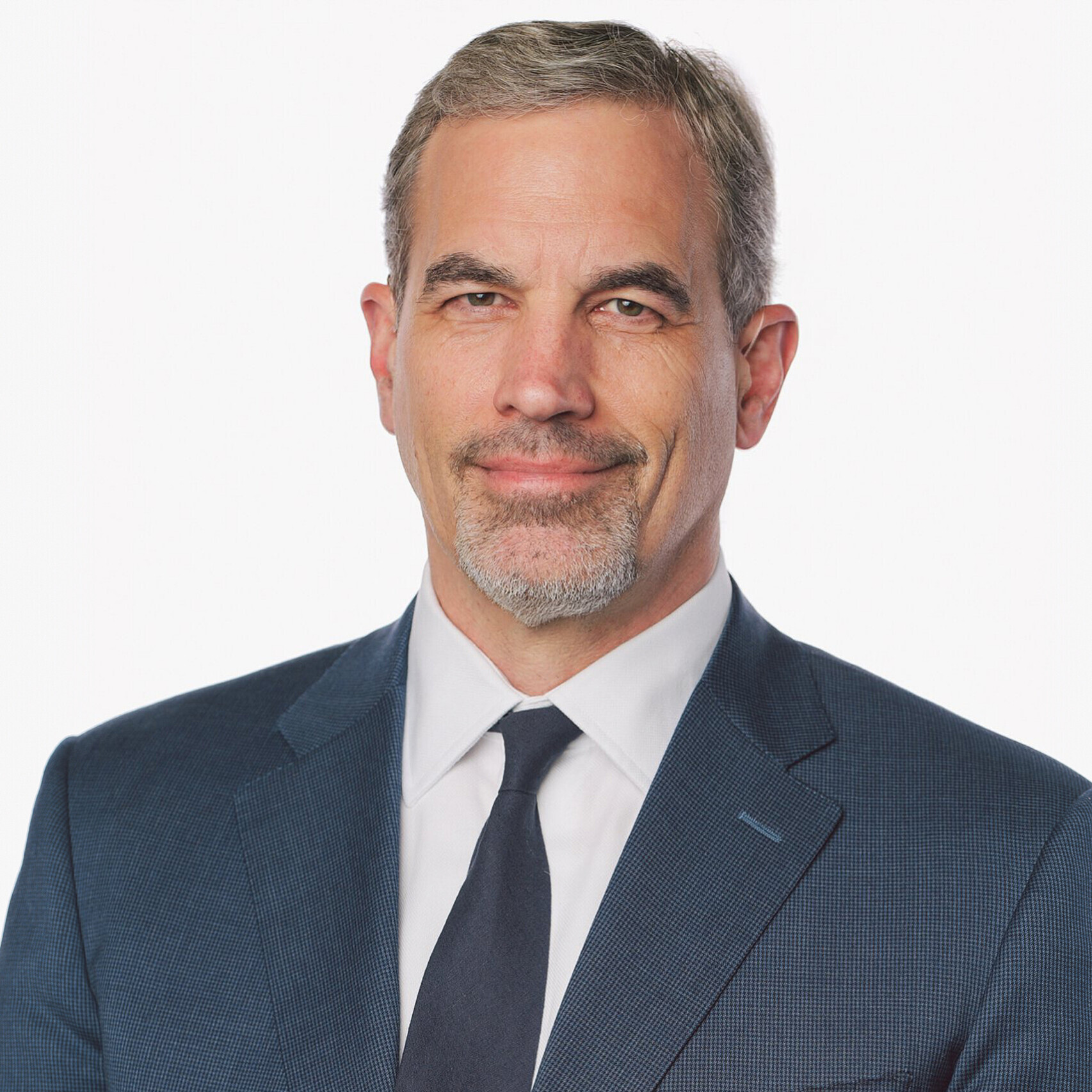


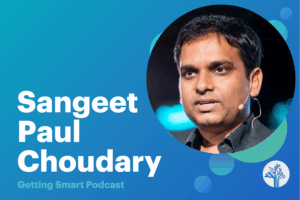
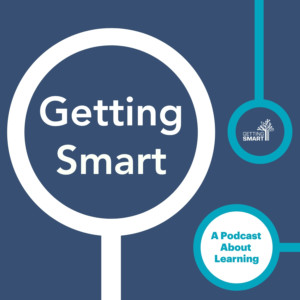


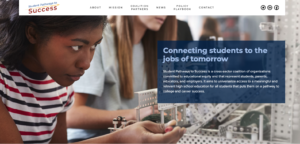
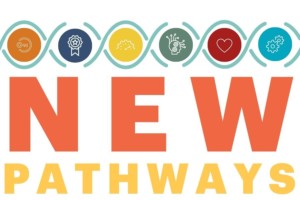
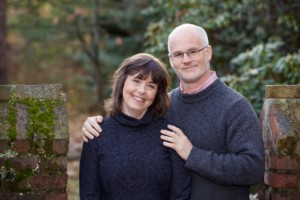
0 Comments
Leave a Comment
Your email address will not be published. All fields are required.